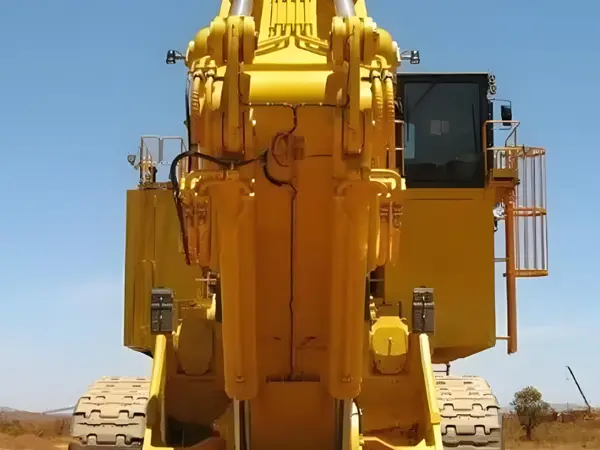The Essential Role of Boom Cylinders in Excavators: Understanding Function and Maintenance
Release time:
2025-02-28
Boom cylinders play a vital role in the operation of excavators, making them essential components for various construction and engineering tasks. Understanding their function and maintenance can enhance the efficiency and longevity of these powerful machines. A boom cylinder is a hydraulic component that provides the lifting force necessary for the excavator’s boom arm to raise and lower. It opera
Boom cylinders play a vital role in the operation of excavators, making them essential components for various construction and engineering tasks. Understanding their function and maintenance can enhance the efficiency and longevity of these powerful machines.
A boom cylinder is a hydraulic component that provides the lifting force necessary for the excavator’s boom arm to raise and lower. It operates by using hydraulic fluid to generate pressure which, in turn, allows the boom to move. When the operator activates the controls, the hydraulic system directs fluid into the boom cylinder, causing it to extend or retract, depending on the desired movement. This hydraulic action enables the excavator to perform a range of tasks, such as digging, lifting, and transporting materials, making it a crucial tool in construction and earthmoving projects.
One of the key advantages of using boom cylinders in excavators is their ability to provide a significant amount of power while maintaining precise control over movements. This precision is essential when maneuvering in tight spaces or when executing tasks that require careful positioning. Additionally, boom cylinders are designed to withstand high pressures and harsh conditions, making them durable and reliable for demanding job sites.
However, like any mechanical component, boom cylinders require regular maintenance to ensure optimal performance. Common maintenance practices include checking hydraulic fluid levels, inspecting for leaks, and ensuring that seals and hoses are in good condition. Regularly cleaning the exterior of the cylinder can also prevent dirt and debris from causing damage. Furthermore, operators should be aware of any unusual noises or changes in movement, as these can indicate potential issues that may require immediate attention.
It is also important to understand the role of the hydraulic system in relation to the boom cylinder. The hydraulic system must be well-maintained, as any issues within this system can directly affect the performance of the boom. Regular checks and servicing of the hydraulic components, including pumps and filters, can help prevent problems that might lead to costly repairs or downtime.
In conclusion, the boom cylinder is a crucial element of excavators, enabling powerful and precise movements essential for various construction tasks. By understanding its function and implementing regular maintenance, operators can ensure their excavators perform efficiently and last longer. Whether you are involved in construction, mining, or landscaping, recognizing the importance of boom cylinders can help optimize productivity and enhance project outcomes.
A boom cylinder is a hydraulic component that provides the lifting force necessary for the excavator’s boom arm to raise and lower. It operates by using hydraulic fluid to generate pressure which, in turn, allows the boom to move. When the operator activates the controls, the hydraulic system directs fluid into the boom cylinder, causing it to extend or retract, depending on the desired movement. This hydraulic action enables the excavator to perform a range of tasks, such as digging, lifting, and transporting materials, making it a crucial tool in construction and earthmoving projects.
One of the key advantages of using boom cylinders in excavators is their ability to provide a significant amount of power while maintaining precise control over movements. This precision is essential when maneuvering in tight spaces or when executing tasks that require careful positioning. Additionally, boom cylinders are designed to withstand high pressures and harsh conditions, making them durable and reliable for demanding job sites.
However, like any mechanical component, boom cylinders require regular maintenance to ensure optimal performance. Common maintenance practices include checking hydraulic fluid levels, inspecting for leaks, and ensuring that seals and hoses are in good condition. Regularly cleaning the exterior of the cylinder can also prevent dirt and debris from causing damage. Furthermore, operators should be aware of any unusual noises or changes in movement, as these can indicate potential issues that may require immediate attention.
It is also important to understand the role of the hydraulic system in relation to the boom cylinder. The hydraulic system must be well-maintained, as any issues within this system can directly affect the performance of the boom. Regular checks and servicing of the hydraulic components, including pumps and filters, can help prevent problems that might lead to costly repairs or downtime.
In conclusion, the boom cylinder is a crucial element of excavators, enabling powerful and precise movements essential for various construction tasks. By understanding its function and implementing regular maintenance, operators can ensure their excavators perform efficiently and last longer. Whether you are involved in construction, mining, or landscaping, recognizing the importance of boom cylinders can help optimize productivity and enhance project outcomes.





